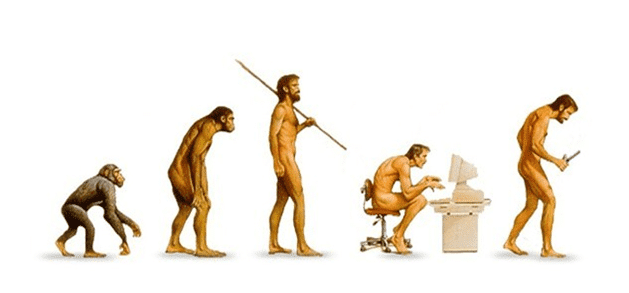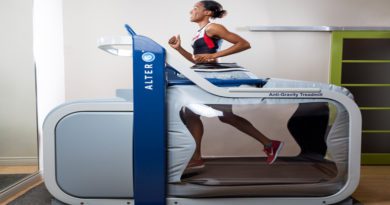Is It Possible to Fix the Common Sitting Syndrome?
In the modern world, people are spending a lot of their time in sitting pose which can cause sitting syndrome. Whatever on their jobs or at home, I am sure you will agree with the state that currently humans are sitting too much. When you picture someone, who is behind the desk for a decent amount of time, the first thing that comes out of your mind is probably muscle cramping or unconscious stretching, most of their neck and back muscles.
People are unaware of their rounded shoulders, forward head posture, and inactive glute muscles. In a prolonged repeating of long hours sitting sessions, your body is literary memorizing your needs and shortens or extends your muscles depending on your sitting position. When the body memorizes something, it becomes a movement pattern. In this case, it is a bad posture pattern. Why is that so?
Related Article: 1 Hour of Daily Exercise Can Cut Risks from Hours of Sitting
The main reason is human evolution. As a species, we are designed to move. That movement is always trying to be as energy-efficient as it can be. To help you understand this, imagine one of your ancestors in a dark cave with nothing but a stick. Now, take yourself as an example of a modern human. Ask yourself a question: What shall we eat today?

A caveman is getting up, leaving the cave with a stick, and through different movement patterns and different muscle usage, securing his meal. You are probably in a hurry; you take a mobile phone and order delivery. In better cases, you are going to a modern health food restaurant where you overpay your food and you are, guess it, sitting again. Today, energy (food) is available and you are not forced to move. That is where the evolution problems start and the sitting syndrome is formed.
Adaptation Mechanism
The mechanism which is a key thing when approaching to extended sitting problems is called “use it or lose it.” Your body is constantly adapting. It doesn’t matter if you are a regular Joe with an office job or an athlete in the NBA betting lines.
Take a hip joint as an example. While you are sitting, your hips are constantly around 90 degrees. The next action you do is standing and walking and your hips are at 180 degrees. The whole bunch of movement freedom below the 90 degrees is not used. Through the time, your hip flexor muscles are getting tight, gluteal region muscles are inactive, unused and they are getting weak.
All of this combined leads to reduced hip mobility. Your body will try to compensate reduced hip mobility and it will generously give lower back greater mobility although it should stay stable. This is one of many ways where people are developing lower back pain, which is getting epidemic proportions, especially in western society. This is only a hip region and only one possible restriction in it. Your shoulders, back, knees are also in an “adaptation danger.”
Better Adaptation for Sitting Syndrome?
What shall I do then? How to adapt better? The starting point is a change of current habits. You will exchange your current gym routines with movement training. Those routines include mobility exercises, stability exercises, stretching, and strength training. Some ancient abilities, forgotten by the modern human, such as proprioception or balance are also included.
Related Article: Fidget Your Way to a Healthier You
This type of training will offer you a holistic approach to your training. It will simulate the conditions that caveman, as mentioned above, had.
You will move naturally, constantly giving your joints, muscles, tendons, and also important, central nervous system different inputs – “I need my locomotor system” – “I need my muscles” – “I use my body.” You will learn how to control your moves and feel the muscles you surely forgot about.
Let’s think about glute region muscles in the first place. You will experience the freedom of squatting and the art of hip hinge pattern. You will understand that curving your back is not the best way to pick a pencil from the floor and that you can lift your shoulder to an ear level without the pain.
Indeed, you cannot totally avoid sitting and other bad patterns that can cause sitting syndrome. You can do, though, your best to invalidate bad adaptation by moving more naturally while you are not working, writing, or playing video games.
In the end, take this sitting challenge to prevent sitting syndrome. Next time you sit, put a book or magazine on your head. Yes, you will look funny. On the other hand, you will practice a better sitting position, not a sloppy one. Each time you curve your spine, or your head goes forward to the screen, the book will fall and warn you about your sitting position. Practice… You can bet that you will get better as time goes.


*Disclosure: This article may contain affiliate links or ads, which means we earn a small commission at no extra cost to you if you make a purchase through these links. These commissions help support the operation and maintenance of our website, allowing us to continue producing free valuable content. Your support is genuinely appreciated, whether you choose to use our links or not. Thank you for being a part of our community and enjoying our content.
PLEASE CONSIDER SHARING THIS ON YOUR SOCIAL MEDIA TO HELP OTHERS LEARN MORE ABOUT THIS TOPIC.





